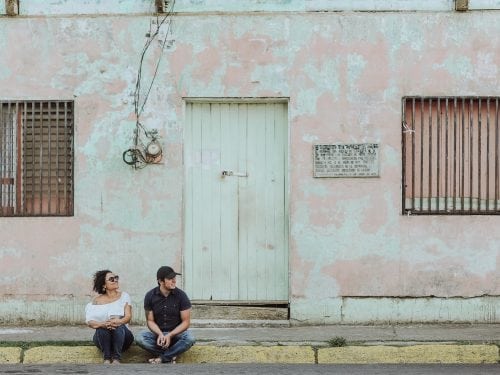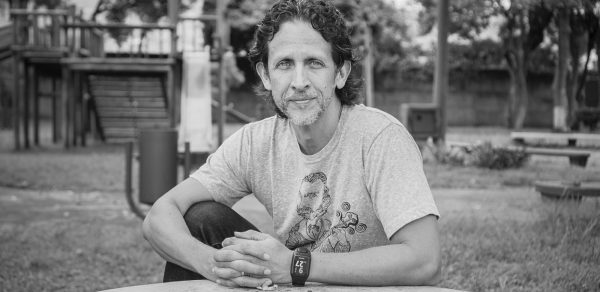
Alexander Jimenez used to listen to Max play when he was a child, when his uncle Beto took him to the Goldenberg estate. “I was always captivated by his music and for about eight years, I had the idea of writing a work on Max,” said Jimenez. But he didn’t quite know how to do it.
He managed to figure it out when the pandemic put everything on hold and he came to live in Nicoya. There he had the opportunity to be closer to the musician and to study his songs better.
Max Goldenberg: Canciones para un Viaje (Songs for a Trip) is Jimenez’s most recent book, published by Arlekín Publishing House, another piece in the Arlekín-Nicoya collection, which looks to document the cultural practices and heritages of Nicoya.
His previous work, Las Formas de la Madera (The Forms of Wood), is also part of this series. In it, he portrays the architecture of the wooden houses built at the beginning of the 20th century in Nicoya.
Now, in his new book, Jimenez recounts the life of the Nicoyan musician from three main aspects: the history of the Goldenberg family and Max’s place in it, his involvement in the world of music and his musical style.
Songs for a Trip tries to outline the musical soundtracks that Max elaborated around his life and his family’s life: a life of songs and migrations. In just the first few pages, the author makes it clear that his intention is not to write a biography on Goldenberg.
“What it’s about is the way what’s far and what’s near in the world are tied together in his songs…. It’s an attempt to think about the worlds that intersect in a life,” Jimenez highlighted in the first chapter.
Archival family photographs are interspersed throughout the essay, ranging from portraits of Max’s father, Jaime Goldenberg, in his native Belarus, to black and white family postcards with his nephews Jaime and Fidel Gamboa— from the group Malpais— when they were still children, to current images that document the many facets of Max.
“The idea was to capture the complexity of Max’s life. He is a song maker, but he’s not just that; he’s also a beekeeper, he’s a farmer, he’s a woodworker. His way of making his songs has to do with his way of living those other trades,” Jimenez explained.
Rewriting the Music of Guanacaste
In addition to the photographs, the book is accompanied by short texts from people Jimenez interviewed during his research: family members, musicians who have worked with Goldenberg, people who in some sense consider themselves his disciples or who have come into contact with him in various ways.
“[Alex] doesn’t interpret other people but lets them talk. To me, it seems that was a very important part of the narrative,” Max Goldenberg himself noted.

“No matter how much one lets one’s imagination fly, it always returns to its point of origin, which is life itself.” Max Goldenberg continues to write songs at 77 and hopes to return to the stage soon. Photo: Cristina Díaz
One of them is a professor at the National University (UNA), Esteban Barboza, who thinks that one of the main successes of the book is that it makes an analysis of Max’s music available to the public as what it is: part of a living culture and heritage.
“In that sense, Max is part of that living culture that doesn’t need any revival or any preservation because it’s more alive than ever and because it’s something that is part of everyday life,” added Barboza.
Another voice included in the book is that of Vera Vargas, head of the Guanacaste Cultural Management office.
“It’s essential to continue doing these productions and these reflections, but mainly that the public reads them,” explained Vargas. In addition, she thinks that this type of work is necessary both within Guanacaste and for those who view us from outside.
“Many times, what is produced in Guanacaste is seen as if everything were folkloric, and innovative things are done here. From these legacies, we can make new proposals. We can create works with a level of quality and with conceptual elements beyond what’s traditional,” she added.
At the end of the book, there’s a songbook with the vast majority of Max’s songs. The only reason why they aren’t all there is because the Nicoyan doesn’t stop composing.
“As the book was coming out, he had already composed other songs. My impression is that it’s a music yet to be known and it’s an open work. Max’s work is under construction,” Jimenez concluded.
If you want to get a copy of Max Goldenberg: Canciones para un Viaje, click on the image below:








Comments